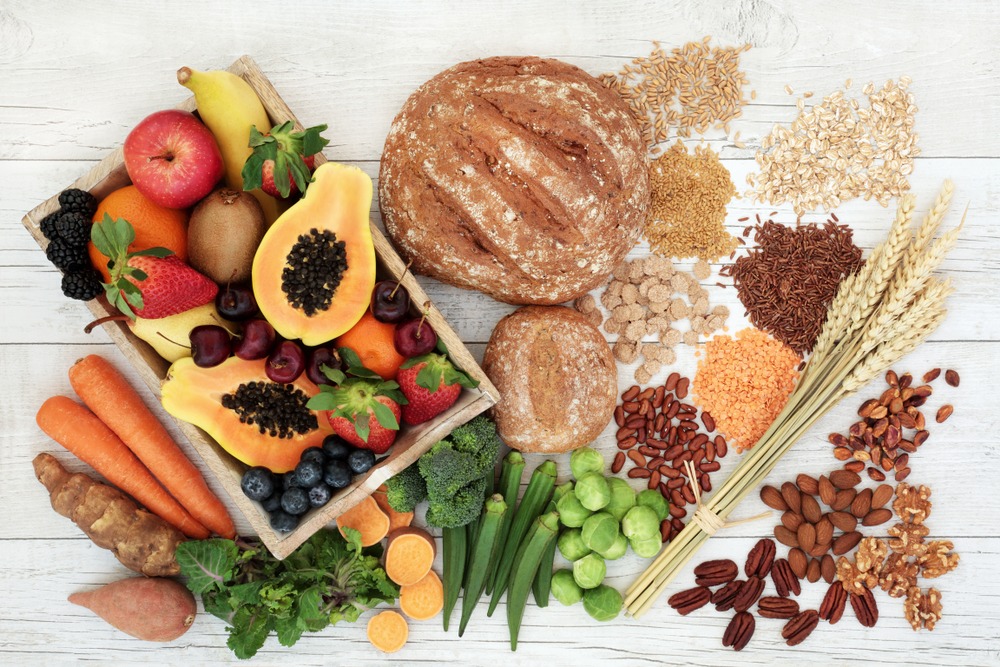 Fiber has been a hot topic in the nutrition media over the past few years. Getting adequate amounts of fiber in the diet is critical for a variety of reasons: digestive health and regularity, immune function, blood sugar stability, and long-term chronic disease prevention.
Fiber has been a hot topic in the nutrition media over the past few years. Getting adequate amounts of fiber in the diet is critical for a variety of reasons: digestive health and regularity, immune function, blood sugar stability, and long-term chronic disease prevention.
However, when consumed too close to training and competition, fiber can cause gastrointestinal upset and hinder performance. This is because your body has to work hard to extract the nutrients from high fiber foods, so foods high in fiber take a longer time to digest. As such, athletes may restrict fiber and struggle to get enough fiber during periods of high-volume training.
Individual needs vary, but the medical consensus is that adults should get 14 grams of fiber for every 1,000 calories they eat. For a person eating 2,000 calories per day, this would equate to 28 grams of fiber per day (McKeown et al., 2022). Americans eat significantly less fiber than recommended, on average consuming ~17 grams per day.
Find Your Window
As you may know, individual differences are significant when it comes to nutrition. For example, athletes vary in their sensitivity to fiber before training. Some athletes barely have to think about what they eat, whereas others have to be highly methodical and selective of their pre-training and competition food choices to avoid sabotaging their performance.
For those who have to be mindful of fiber intake, it’s important to understand the window of time you are able to tolerate fiber prior to a workout. In order to find your window, try consuming a moderate amount of fiber in a meal, 5-7 grams, four hours before training. Fiber is found in its highest concentrations in berries, seeds like chia seeds and flax seeds, beans, whole grains like quinoa and whole grain pasta, and cruciferous vegetables like broccoli and leafy greens.
If this goes well, move consumption forward by 30 minutes, so consume fiber 3.5 hours before training. Continue this process in half hour increments until you find how much time you need to buffer between eating fiber and training to avoid GI distress. It is important to note that this time window will likely change if you’re doing a high intensity vs. a low intensity workout. Essentially, you will probably be able to tolerate more fiber before an endurance workout than you would a high intensity workout, and you may be able to eat fiber more closely to endurance workouts than you would to high intensity workouts.
Load Up Post Workout
Athletes should strive to make sure the meals they consume after the day’s workout(s) are ones that are high in fiber since they may need to limit fiber intake prior to training. If you train in the mornings, you may choose a lower-fiber breakfast, but make sure to fill lunch and dinner with plenty of whole grains, cruciferous vegetables, and high fiber fruits like berries and apples. Snacks can also help “fill the gap” – fruits, nuts, and whole grain or seed-based crackers can bump up your fiber intake for the day.
Take Advantage of Easy Days
Days off, as well as days when your training is less intense, can be an excellent time to “double down” on fiber intake since you do not need to be concerned about causing gastrointestinal upset. This will improve average consumption over the course of the week and will help you reap the benefits of consuming dietary fiber without disrupting your training schedule. If you are looking to increase your daily fiber intake, make sure to implement the increase slowly, as your body will need time to adjust to the dietary change.
References
McKeown, N. M., Fahey, G. C., Slavin, J., & van der Kamp, J.-W. (2022). Fibre intake for optimal health: How can healthcare professionals support people to reach dietary recommendations? The BMJ, 378, e054370. https://doi.org/10.1136/bmj-2020-054370
Read more Spirit of Sport blog posts



